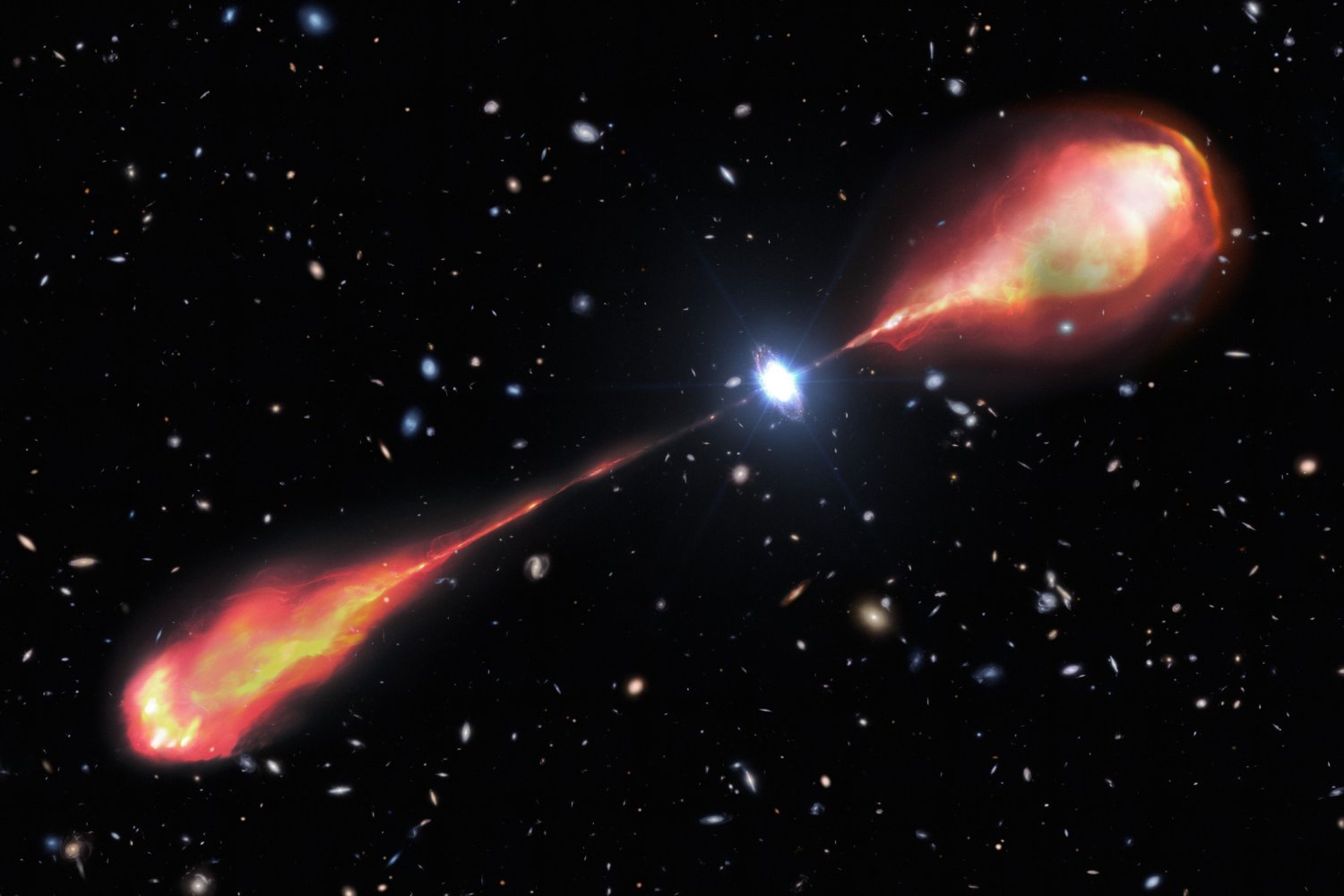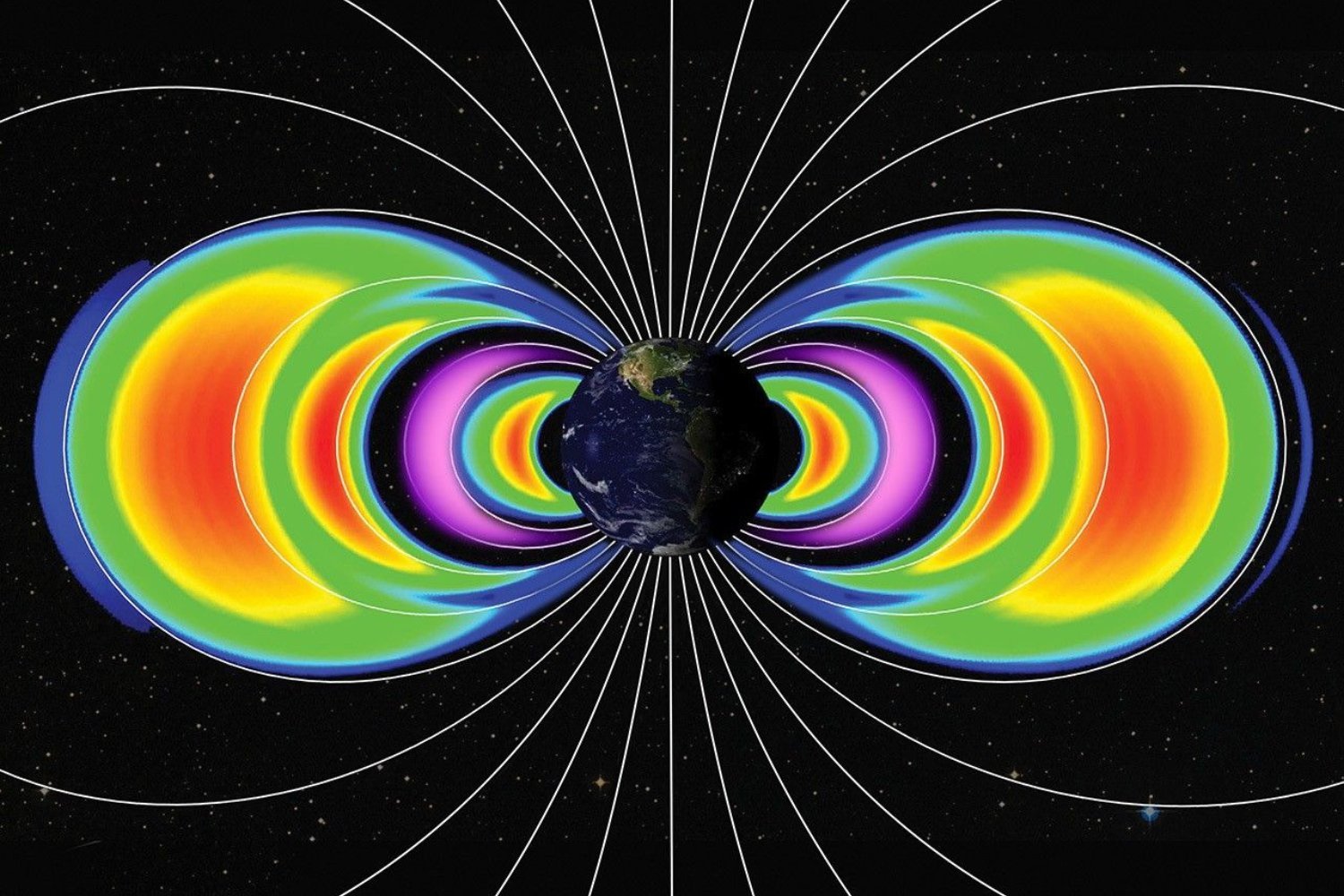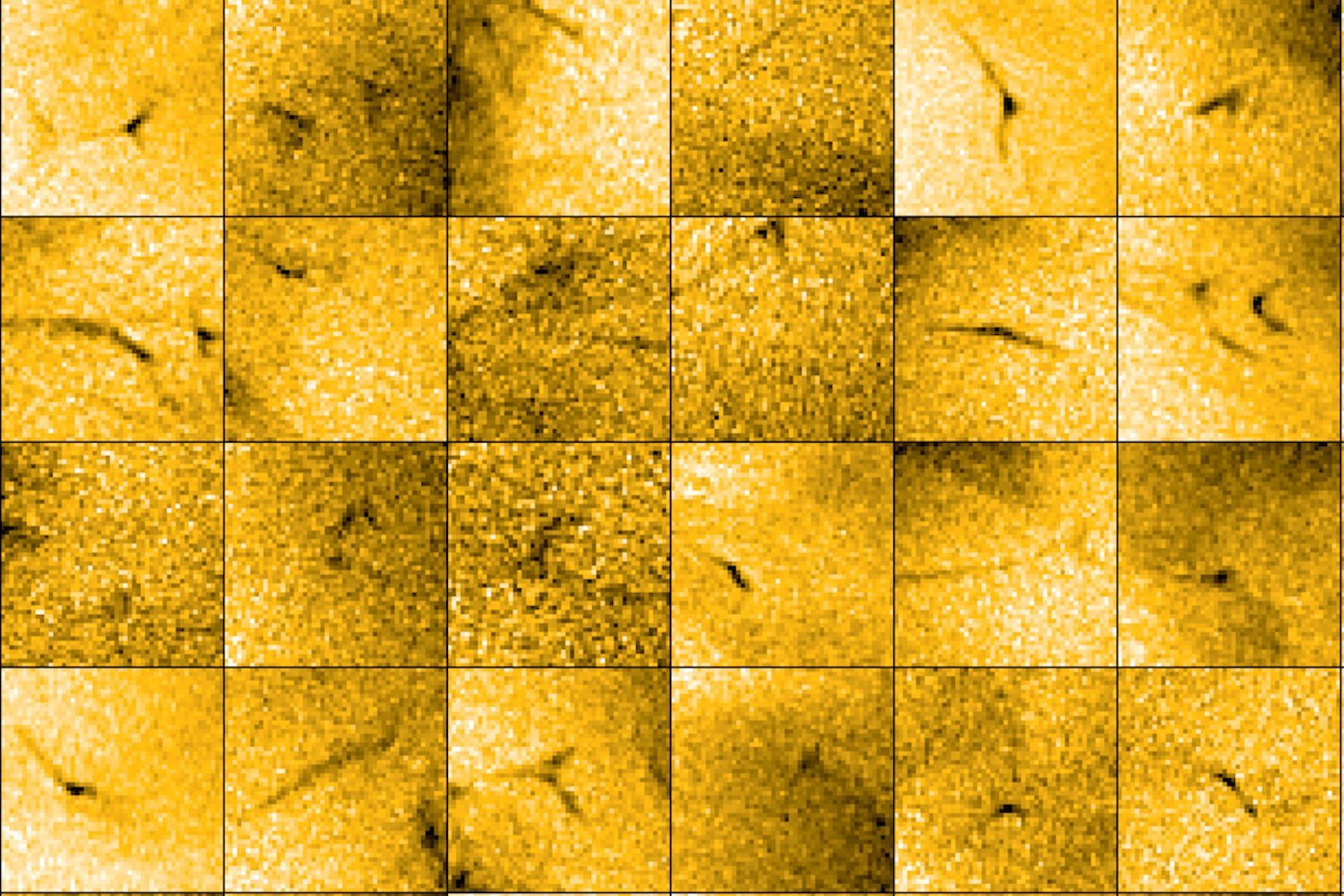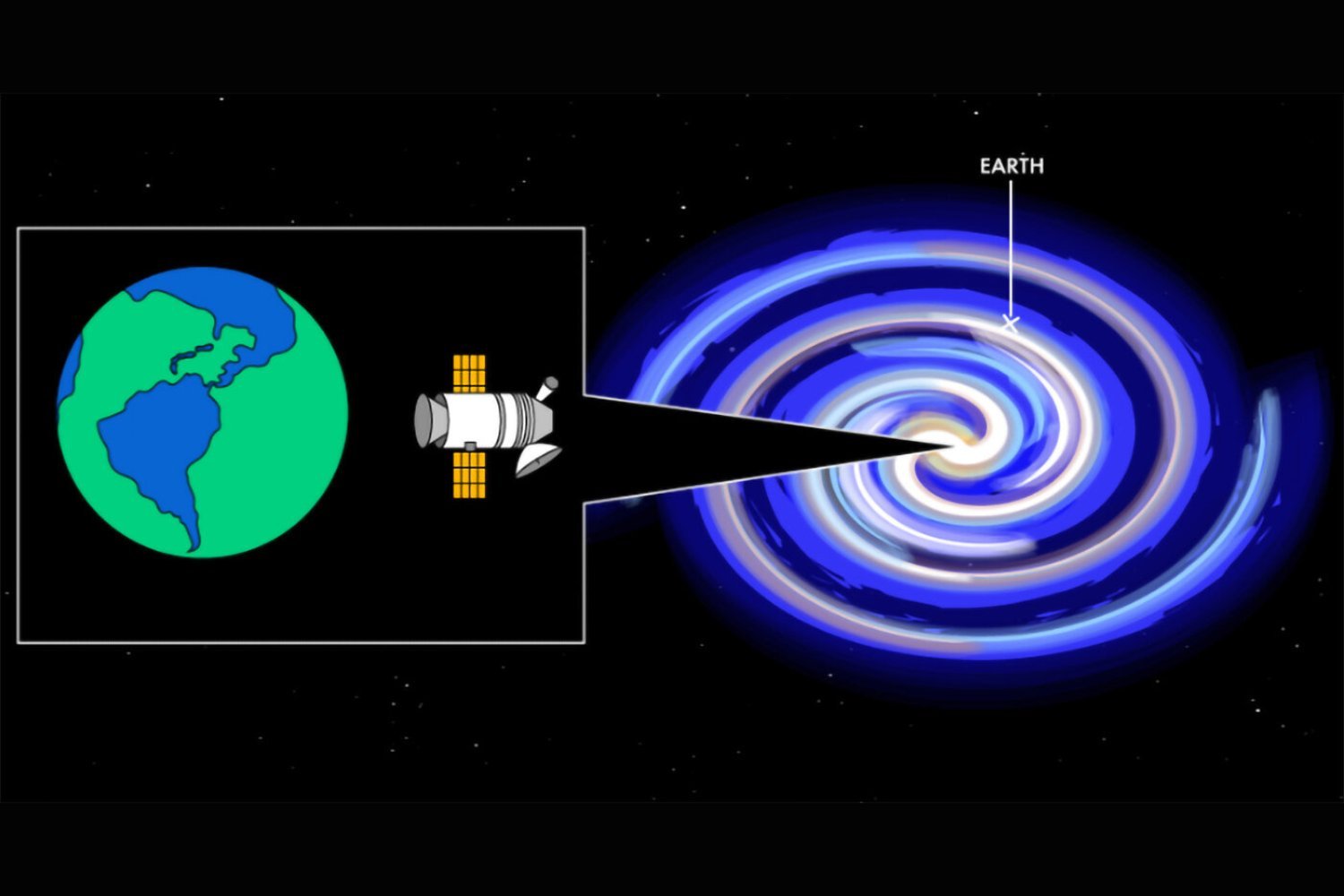A colossal radio jet, stretching at least 200,000 light-years across—twice the diameter of our Milky Way—has been discovered in the early universe. This remarkable jet, observed when the universe was less than 10% of its current age (approximately 1.2 billion years old), is the largest known from such an early epoch. While not the largest jet ever observed, its size and age raise intriguing questions about the formation and evolution of these powerful cosmic phenomena. The research detailing this discovery has been published in The Astrophysical Journal Letters.
A Surprising Source
Radio jets, streams of charged particles ejected from the cores of active galaxies, are relatively common in the nearby universe. However, they are far less frequently observed in the early universe. This newly discovered jet originates from a quasar, a highly energetic galactic nucleus, designated J1601+3102. Initial detection came from data collected by the Low Frequency Array (LOFAR) Telescope, with follow-up observations using the Gemini Near-Infrared Spectrograph (GNIRS) and the Hobby Eberly Telescope providing further details about the jet and its quasar source.
Surprisingly, the quasar powering this enormous jet is relatively small, measuring just 450 million times the mass of our Sun. This challenges the prevailing theory that the most powerful jets are produced by the most massive or rapidly accreting black holes. As Anniek Gloudemans, an astronomer at NOIRLab and lead author of the study, explains, “There is this idea that maybe the most powerful jets are created from the most massive black holes… Therefore we were maybe expecting this newly discovered jet to host an extra-ordinary black hole, but this wasn’t the case.”
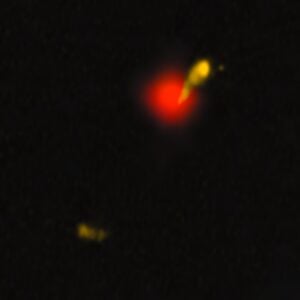 The quasar jet.
The quasar jet.
Challenges of Early Universe Observation
The scarcity of observed large radio jets in the early universe may be due to the interference from the cosmic microwave background radiation. This remnant energy from the Big Bang effectively drowns out fainter radio signals. The sheer size of J1601+3102’s jet is likely the reason it was detectable despite this background noise.
Comparing Cosmic Giants
This ancient jet, while impressive, is not the largest ever discovered. That distinction belongs to the Porphyrion megastructure, a pair of jets spanning a staggering 23 million light-years, discovered last year. This is more than ten times the size of the J1601+3102 jet. However, it’s important to consider the vast difference in age.
As Gloudemans points out, “We observed this jet as it was 12.4 billion years ago, so over time it will have grown larger. Porphyrion is an extremely large giant at a distance of about 7.5 billion light years. Our newly discovered jet doesn’t come close to the 23 million light-year size of Porphyrion, however, it does provide evidence of large radio jets already in place earlier in the history of the Universe.”
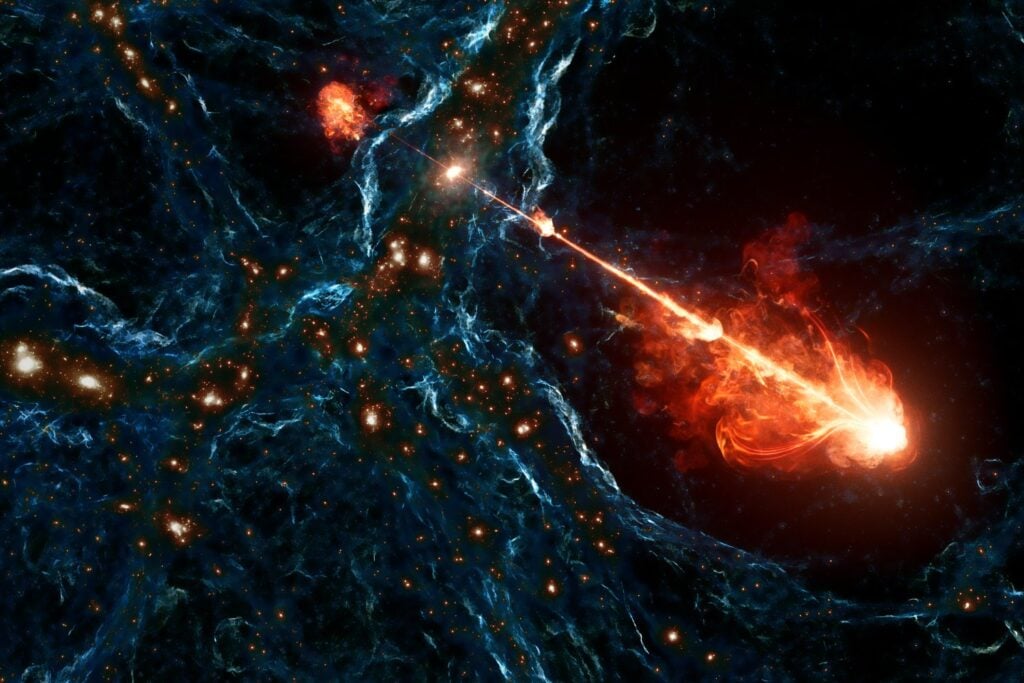 An artist
An artist
Unanswered Questions and Future Research
The discovery of J1601+3102’s jet raises several questions. How do these jets form and interact with their surrounding environments? How do they influence the growth of their host galaxies and neighboring galaxies? What is the precise relationship between the size and power of a jet and the characteristics of the black hole that produces it?
Future observations with next-generation instruments like the Square Kilometer Array will undoubtedly shed more light on the formation, evolution, and impact of these extraordinary cosmic jets, revealing further insights into the dynamic processes shaping the universe.
Conclusion
The discovery of this enormous radio jet in the early universe challenges our understanding of the formation of these powerful phenomena. While smaller than the largest known jets, its significant size at such a young age provides crucial insights into the early universe’s dynamic environment. Further research is needed to fully understand the relationship between these jets, their host black holes, and their impact on galactic evolution. This discovery underscores the vastness and complexity of the cosmos, and the ongoing quest to unravel its mysteries.



